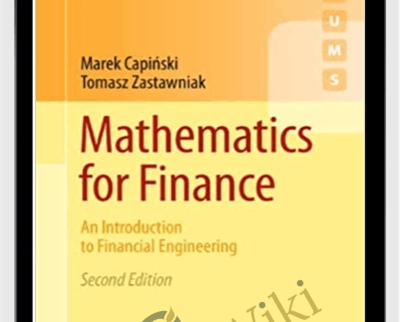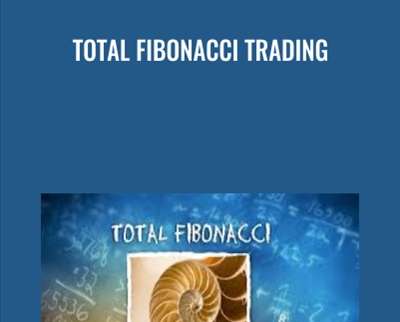Buy Mathematics For Finance. An Introduction To Financial Engineering – Marek Capinski and Tomasz Zastawniak Course at GBesy. We actively participate in Groupbuys and are committed to sharing knowledge with a wider audience. Rest assured, the quality of our courses matches that of the original sale page. If you prefer, you can also buy directly from the sale page at the full price (the SALEPAGE link is directly provided in the post).
Salepage link: At HERE. Archive:
$41.96 $15 – Mathematics For Finance. An Introduction To Financial Engineering – Marek Capinski and Tomasz Zastawniak
Mathematics for Finance: An Introduction to Financial Engineering combines financial motivation with mathematical style. Assuming only basic knowledge of probability and calculus, it presents three major areas of mathematical finance, namely Option pricing based on the no-arbitrage principle in discrete and continuous time setting, Markowitz portfolio optimisation and Capital Asset Pricing Model, and basic stochastic interest rate models in discrete setting.
Review
From the reviews of the second edition:
“This second edition … is to start each chapter with the presentation of a case study and to end each chapter with a thorough discussion of that study. The authors also added new material on time-continuous models, along with the essentials of the mathematical arguments. … The current book is more substantial … . Summing Up: Recommended. Upper-division undergraduates and graduate students.” (D. Robbins, Choice, Vol. 48 (10), June, 2011)
“Throughout the text, the authors invite active reader participation. One way is by opening and closing each chapter with a case study. … authors have embedded all of the exercises in the discussion. … Solutions to all exercises appear in an appendix. This makes the book excellent for self-study. … this book provides an excellent introduction to financial engineering. … authors display impressive dexterity in ushering the reader from basics to an understanding of some of the deepest and most far-reaching ideas in the discipline.” (David A. Huckaby, The Mathematical Association of America, February, 2011)
“This second edition consists of standard topics for undergraduate level financial mathematics courses, plus an introduction to materials from an advanced level course. … Each chapter starts with a case study and ends with a discussion on it using the material taught in the chapter. In general this book provides many examples and exercises, which is very useful for helping readers to understand the materials covered. Overall this is a great book for upper level undergraduate students and those who want to self-study financial engineering.” (Youngna Choi, Mathematical Reviews, Issue 2012 e)
“This textbook presents … three major areas of mathematical finance at a level suitable for second or third year undergraduate students in mathematics, business management, finance or economics. … The text is interspersed with a multitude of elaborated examples and exercises, complete with solutions, providing ample material for tutorials as well as making the book good for self-study.” (Yuliya S. Mishura, Zentralblatt MATH, Vol. 1207, 2011)
From the Back Cover
As with the first edition, Mathematics for Finance: An Introduction to Financial Engineering combines financial motivation with mathematical style. Assuming only basic knowledge of probability and calculus, it presents three major areas of mathematical finance, namely option pricing based on the no-arbitrage principle in discrete and continuous time setting, Markowitz portfolio optimisation and the Capital Asset Pricing Model, and basic stochastic interest rate models in discrete setting.
In this second edition, the material has been thoroughly revised and rearranged. New features include:
- A case study to begin each chapter – a real-life situation motivating the development of theoretical tools;
- A detailed discussion of the case study at the end of each chapter;
- A new chapter on time-continuous models with intuitive outlines of the mathematical arguments and constructions;
- Complete proofs of the two fundamental theorems of mathematical finance in discrete setting.
From the reviews of the first edition:
”This text is an excellent introduction to Mathematical Finance. Armed with a knowledge of basic calculus and probability a student can use this book to learn about derivatives, interest rates and their term structure and portfolio management.”(Zentralblatt MATH)
”Given these basic tools, it is surprising how high a level of sophistication the authors achieve, covering such topics as arbitrage-free valuation, binomial trees, and risk-neutral valuation.” (www.riskbook.com)
”The reviewer can only congratulate the authors with successful completion of a difficult task of writing a useful textbook on a traditionally hard topic.” (K. Borovkov, The Australian Mathematical Society Gazette, Vol. 31 (4), 2004)
$41.96 $15 – Mathematics For Finance. An Introduction To Financial Engineering – Marek Capinski and Tomasz Zastawniak
Buy the Mathematics For Finance. An Introduction To Financial Engineering – Marek Capinski and Tomasz Zastawniak course at the best price at GBesy.. After your purchase, you will get access to the downloads page. You can download all the files associated in your order at here and we will also send a download notification email via your mail.
Unlock your full potential with Mathematics For Finance. An Introduction To Financial Engineering – Marek Capinski and Tomasz Zastawniak courses. our courses are designed to help you excel.
Why wait? Take the first step towards greatness by purchasing Mathematics For Finance. An Introduction To Financial Engineering – Marek Capinski and Tomasz Zastawniak courses today. We offer a seamless and secure purchasing experience, ensuring your peace of mind. With our trusted payment gateways, Stripe and PayPal, you can confidently complete your transaction knowing that your financial information is protected.
Stripe, known for its robust security measures, provides a safe and reliable payment process. With its encrypted technology, your sensitive data remains confidential throughout the transaction. Rest assured that your purchase is protected.
PayPal, a globally recognized payment platform, offers an additional layer of security. With its buyer protection program, you can feel confident in your purchase. PayPal ensures that your financial details are safeguarded, allowing you to focus on your learning journey.
Is it secure? to Use of?
- Your identity is completely confidential. We do not share your information with anyone. So it is absolutely safe to buy the Mathematics For Finance. An Introduction To Financial Engineering – Marek Capinski and Tomasz Zastawniak course.
- 100% Safe Checkout Privateness coverage
- Communication and encryption of sensitive knowledge
- All card numbers are encrypted using AES at relaxation-256 and transmitting card numbers runs in a separate internet hosting atmosphere, and doesn’t share or save any data.
How can this course be delivered?
- After your successful payment this “Mathematics For Finance. An Introduction To Financial Engineering – Marek Capinski and Tomasz Zastawniak course”, Most of the products will come to you immediately. But for some products were posted for offer. Please wait for our response, it might take a few hours due to the time zone difference.
- If this happens, please wait. The technical department will process the link shortly after. You will receive notifications directly by e-mail. We appreciate your wait.
What Shipping Methods Are Available?
- You will receive a download link in the invoice or YOUR ACCOUNT.
- The course link always exists. use your account to login and download the Mathematics For Finance. An Introduction To Financial Engineering – Marek Capinski and Tomasz Zastawniak course whenever you need.
- You only need to visit a single link, and you can get all the Mathematics For Finance. An Introduction To Financial Engineering – Marek Capinski and Tomasz Zastawniak course content at once.
- You can do your learning online. You can be downloaded for better results and can study anywhere on any device. Make sure your system does not sleep during the download.
How Do I Track Order?
- We always notice the status of your order immediately after your payment. After 7 days if there is no download link, the system will automatically complete your money.
- We love to hear from you. Please don’t hesitate to email us with any comments, questions and suggestions.
![GBesy [GB] GBesy [GB]](https://www.gbesy.com/wp-content/uploads/2023/05/gbesy-Logo-full-100.png)



 Purchase this course you will earn
Purchase this course you will earn 





Reviews
There are no reviews yet.